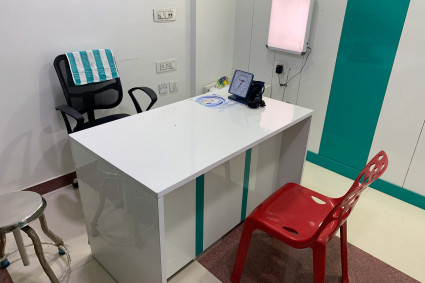Kidney stones, which can be recognized by their solid deposits of minerals and salts, are a major health problem worldwide. They can range in size from small particles to huge stones, causing significant pain and complications. The most common types of kidney stones are calcium oxalate, uric acid, and struvite. Treatment for kidney stones has advanced greatly in India, where hospitals and medical expertise are continuously improving.This combination of innovative medical technology and expert knowledge emphasizes India's importance in addressing worldwide kidney stone treatment problems.
Kidney stones can cause severe discomfort in the back or side, blood in the urine, nausea, and vomiting. Depending on the size and location of the stone, treatment may include painkillers, medication, or operations to remove or break the stone.
Treatment Options in India
India has a strong medical system with world-class facilities and trained doctors specialized in urology and nephrology. In India, kidney stones are often treated using a multidisciplinary approach that is customized to the patient's specific needs, such as:
· Extracorporeal Shock Wave Lithotripsy (ESWL): It is a non-invasive treatment that uses shock waves to break down kidney stones into tiny pieces, allowing them to move more easily through the urinary tract.
· Ureteroscopy (URS): It is a minimally invasive treatment that involves inserting a thin, flexible scope into the urethra and bladder to reach a stone in the ureter or kidney. Once discovered, the stone can be removed or broken with laser technology.
· Percutaneous Nephrolithotomy (PCNL): It is a surgical treatment that removes big kidney stones through a tiny incision in the back. It is often used for stones that are too big to be treated with ESWL or URS.
Breakthroughs and Innovations
· Miniaturization of Surgical devices: Advances in endoscopic technology have resulted in the creation of smaller, more flexible devices for minimally invasive procedures like URS. This increases precision and maneuverability, decreasing stress on surrounding tissues and enhancing results for patients.
· Holmium laser lithotripsy: It is a very successful treatment for breaking up kidney stones during URS operations. The precision and flexibility of holmium lasers allow urologists to efficiently target and break stones of various compositions, including difficult-to-treat calcium oxalate stones.
· Metabolic Evaluation and Preventive Strategies: As doctors in India recognize the value of preventive treatment, they are increasingly concentrating on metabolic evaluation to identify underlying risk factors for kidney stone development. Patients may reduce their risk of recurrent stone development by changing their diet and lifestyle, as well as taking customized medicinal treatments.
The kidney stone treatment cost in India varies by procedure and hospital. On average, it costs between $1,000 and $2,700. Treatment success rates range from 50 to 90%, depending on the stone's characteristics, surgical procedures, and postoperative care.
In India, there are several top hospitals with internationally renowned doctors who specialize in kidney stone treatment. Medanta, Fortis, Apollo, and Artemis hospitals have excellent facilities and competent urologists who are dedicated to patient care and effective outcomes.





